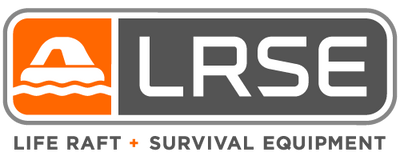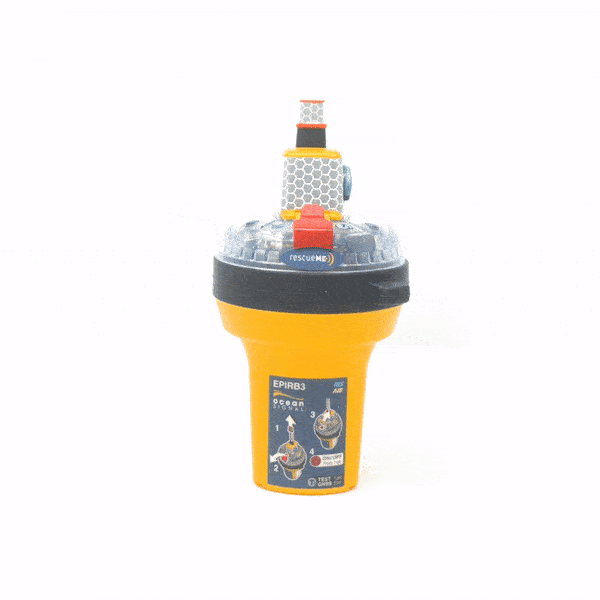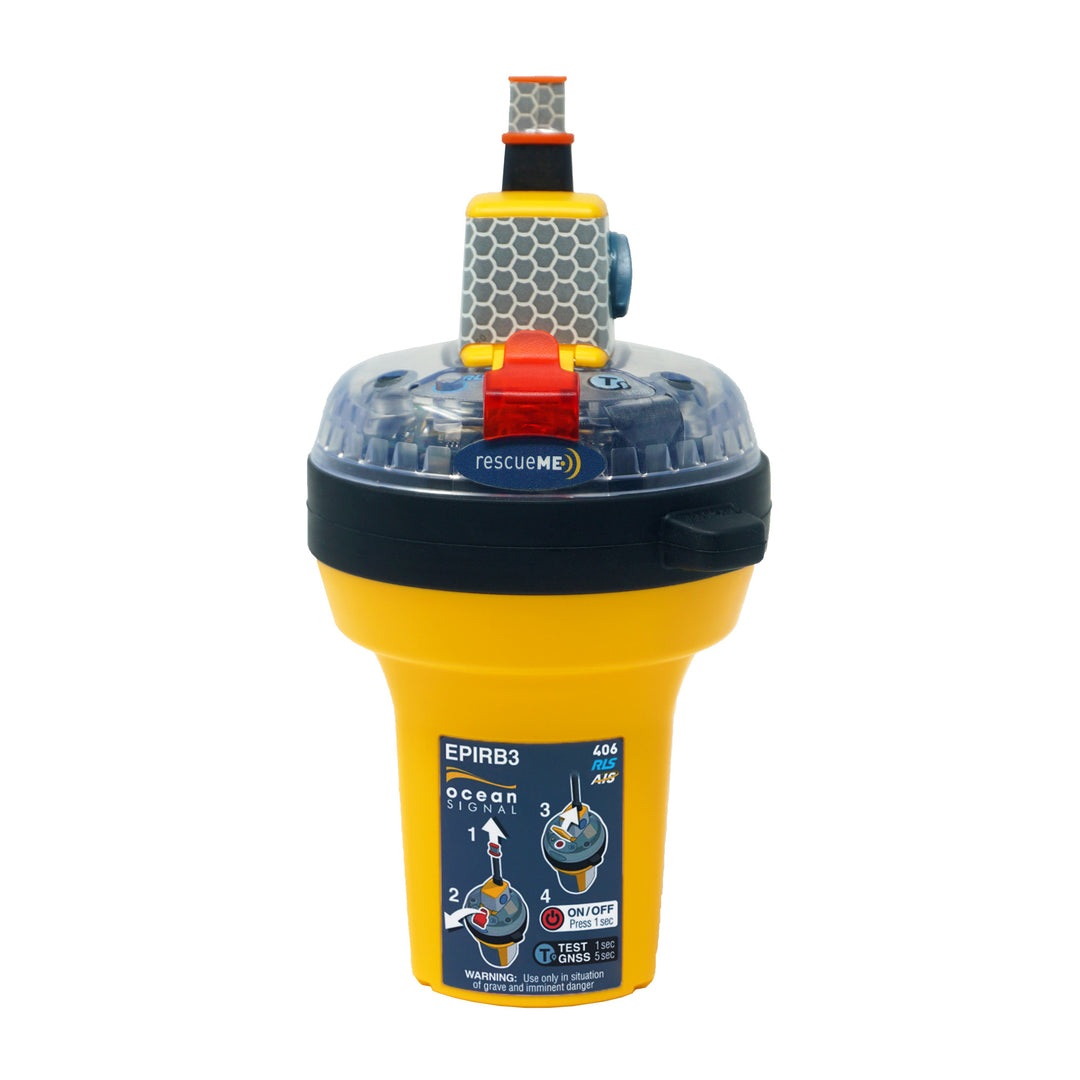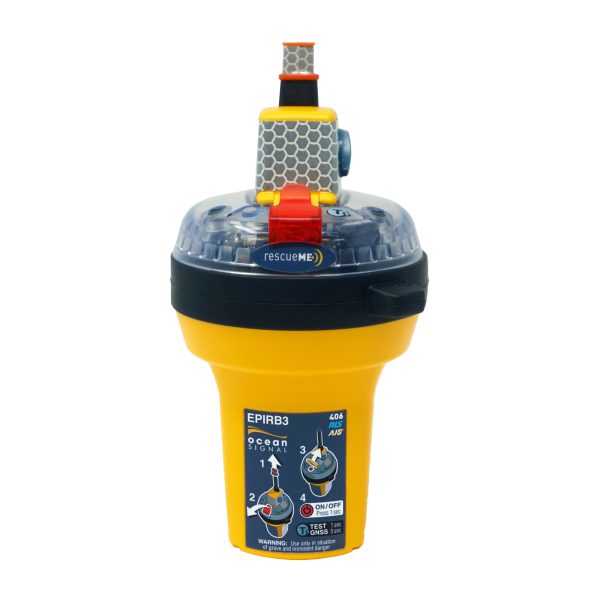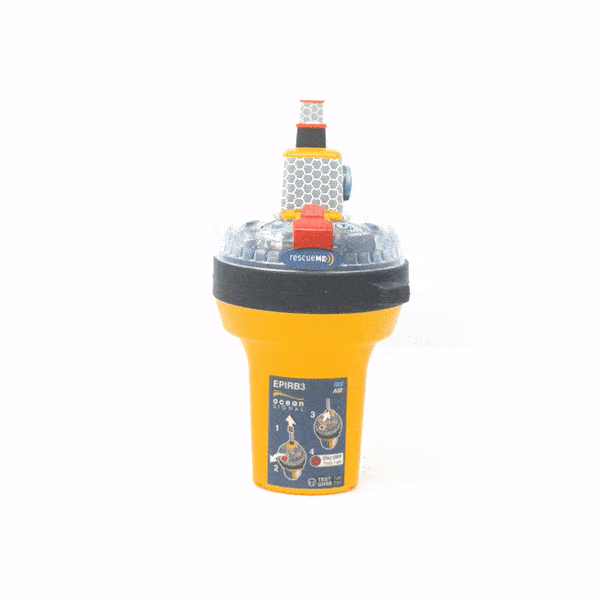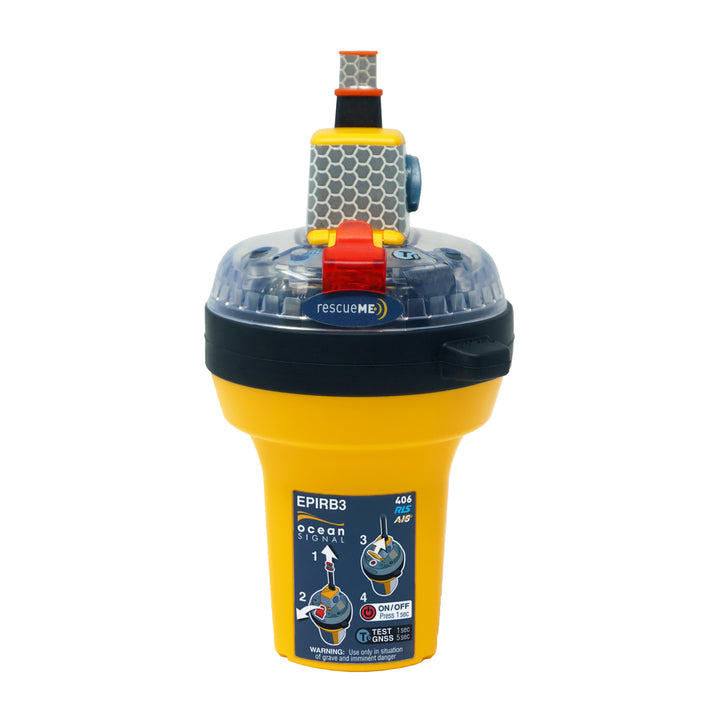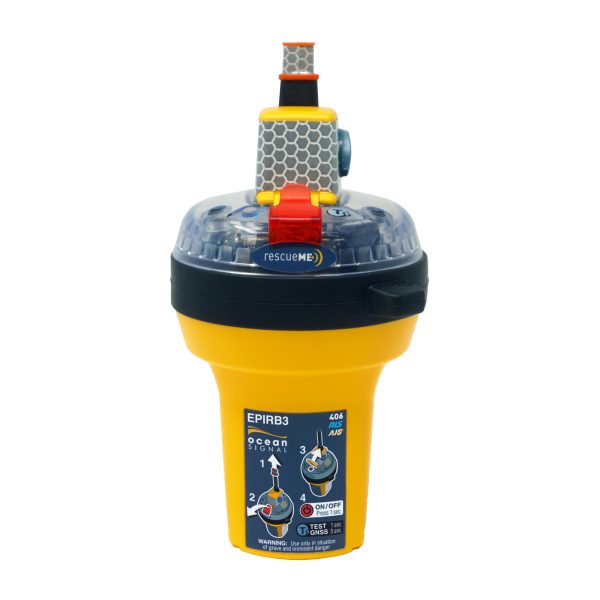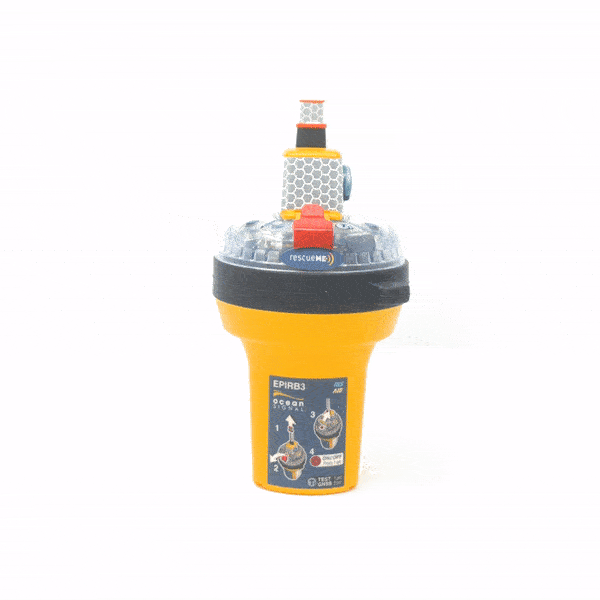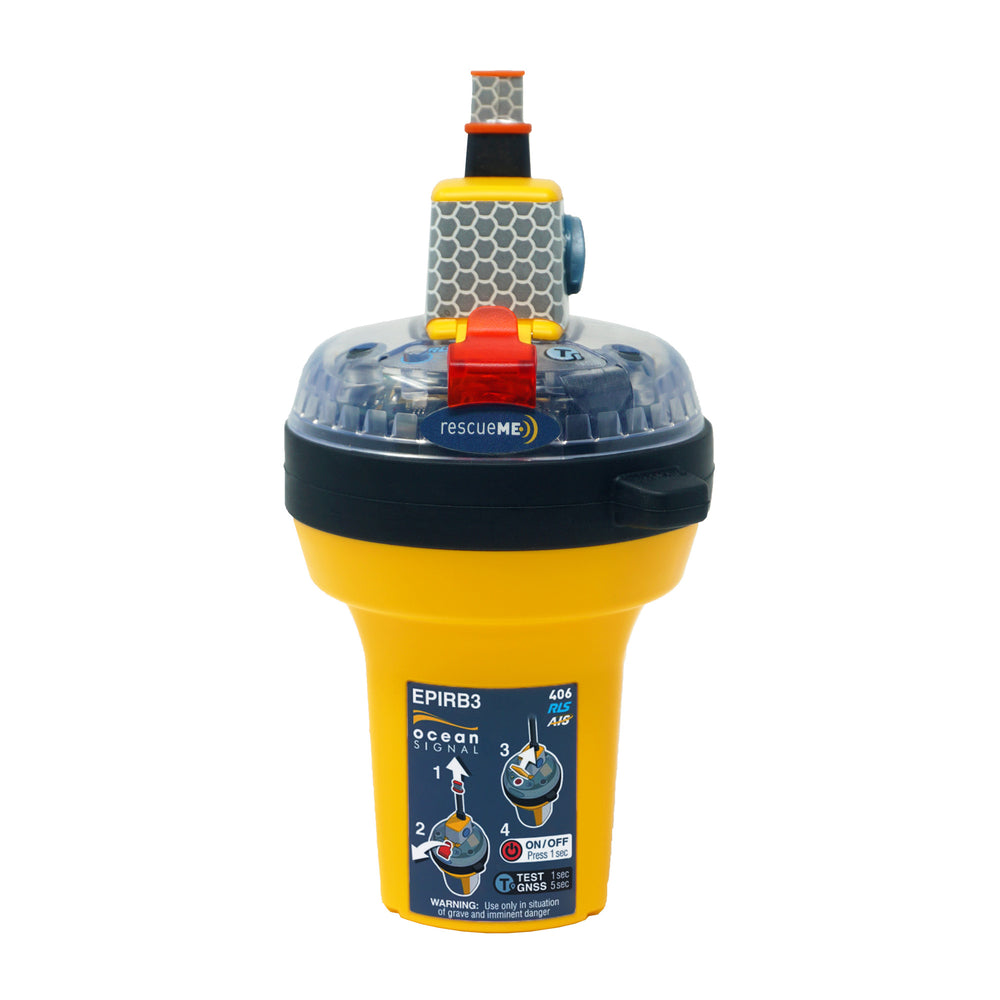The new Ocean Signal EPIRB3 is a full featured 406 MHz global rescue beacon that comes with a manual release bracket and packs a host of features into a compact modern design which includes AIS technology. AIS provides local rescuers precise and reliable information on the current beacon position, thereby speeding rescue operations. Additionally, Return Link Service (RLS) comforts those who activate the beacon by confirming that their distress message has been received. The inclusion of Near Field Communication (NFC) capability allows use of a smartphone app to monitor the EPIRB’s battery and other functions ensuring it is working properly. With its slim design and advanced features, the EPIRB3 is ideal for a variety of mariners whether they are cruising the med, heading out through the straights for a passage, fishing, working, or sailing offshore.
- The EPIRB3 uses the GNSS (GPS, Galileo, Glonass) positioning networks to derive its location globally. When the beacon is triggered a 406 MHz distress transmission relays this GPS EPIRB (GPIRB) position, accurate to within 100 meters, to the worldwide Cospas-Sarsat search and rescue satellite network. Ground stations connected to the satellite system receive EPIRB identification and position of deployment information so rescue operations can be coordinated and initiated. With advanced AIS technology now incorporated into the EPIRB, directly upon activation the beacon starts transmitting AIS signals so that nearby AIS equipped vessels are instantly notified of the distress situation and are provided the beacon location. AIS equipped vessels within VHF range will see a safety message on their screens that includes the MMSI vessel identification. Local vessels can start rescue and recovery operations immediately, potentially speeding recovery times and saving lives. Since an AIS target is presented on the onboard display of any nearby AIS equipped vessel, they can easily navigate directly to the EPIRB by selecting the AIS target. Even when no local vessels are available, AIS will speed recovery times by allowing maritime SAR operators to pinpoint the EPIRB’s location as they approach. The combination of Global satellite distress calling, precise GPIRB location transmission and local AIS safety messaging will greatly improve recovery time and success.
- Beacon users can now check their EPIRB by connecting their smartphone to it with NFC (Near Field Communication). This technology connects a smartphone placed adjacent to the EPIRB3 by launching the free Ocean Signal Product App automatically. Full diagnostics are available in the app showing the user the current battery life, number of self-tests completed, number of GNSS tests completed, and how long the EPIRB has been activated. Detailed information including a map view that shows where a GNSS test was performed, the date and time of the test, the time it took the EPIRB to get a fix on the GNSS coordinates, number of satellites used to obtain that fix, and the accuracy of the fix are all conveniently displayed. Ocean Signal’s free Mobile App and NFC functionality provide users all the information they need to confirm their EPIRB is fully functioning and ready for deployment in case of an emergency.
- EPIRBs are deployed in times of distress and rescue operations can take time especially if the vessel in distress is far offshore. The EPIRB3 is equipped with Return Link Service that notifies users that the beacon distress signal has been delivered. The RLS signal is sent back through the Galileo satellite network to confirm that the distress message along with the precise EPIRB location and identifiers have been received. A simple flashing blue light tells users that the EPIRB has successfully connected through the satellite network and rescuers will be notified. Knowing that the digital mayday has been successfully communicated along with the EPIRB identification and beacon location helps those in distress remain calm while awaiting rescue operations.
- The EPIRB3 comes complete with a Category two manual release mounting bracket. This bracket securely stores the EPIRB3 for the duration of your trip regardless of the conditions experienced throughout. It also provides a quick release so the EPIRB can swiftly and easily be removed when needed.
Specifications
| Name | EPIRB3 |
| Product Description | EPIRB with AIS, RLS, and NFC |
| Model Number | EPIRB3 |
| Output Power (406/121.5) | 406.040 MHz, 5W (nominal) / 121.5 MHz, 50mW (nominal) |
| AIS | Automatic Identification System (AIS) Alert for Local Rescue |
| RLS | Return Link Service (RLS) confirmation direct to beacon |
| NFC / Mobile App | Near Field Communication (NFC) and Mobile App Included |
| Strobe | White & Infrared |
| Size (antenna not deployed) – Beacon Only | 6.8 x 3.6 x 3.1”
17.27 x 9.14 x 7.87 cm |
| Weight – Beacon Only | 0.42 lbs (190g) |
| Battery | Lithium battery, Li/FeS2 |
| Battery Replacement | 10-year replaceable battery (replace 10 years after the date of manufacture or after activation) |
| Temperature Range (Class 2) | Storage: -22°F to +158°F (-30°C to +70°C)
Operating: -4°F to +131°F (-20°C to +55°C) |
| GPS | 72 Channel Multi-constellation receiver (GPS, Galileo, & Glonass GNSS) |
| Activation | Out of bracket and wet, or manually in or out of the bracket (Class 3 – manual activation only – no water activation) |
| Waterproof | 33 ft (10 m) for 5 min. |
| Buoyant | Yes |
| Operational Life | 48 hours minimum @ -4°F (-20°C) |
| Deployment | Category II – Manual Release |
| Warranty | 2 Years (5 years if registered) |
| Accessories | Cat II Bracket (P/N 703S-01600) |
| Approvals | Cospas-Sarsat, FCC, MED |
Warranty
WARRANTY LENGTH: 2 Years (5 years if registered)
This product is warranted against factory defects in material and workmanship for a period of 2 (5 years if registered)* years from the date of purchase or receipt as a gift. During the warranty period ACR Electronics, Inc. will repair or at its option, replace at no cost to you for labor, materials or return transportation.
